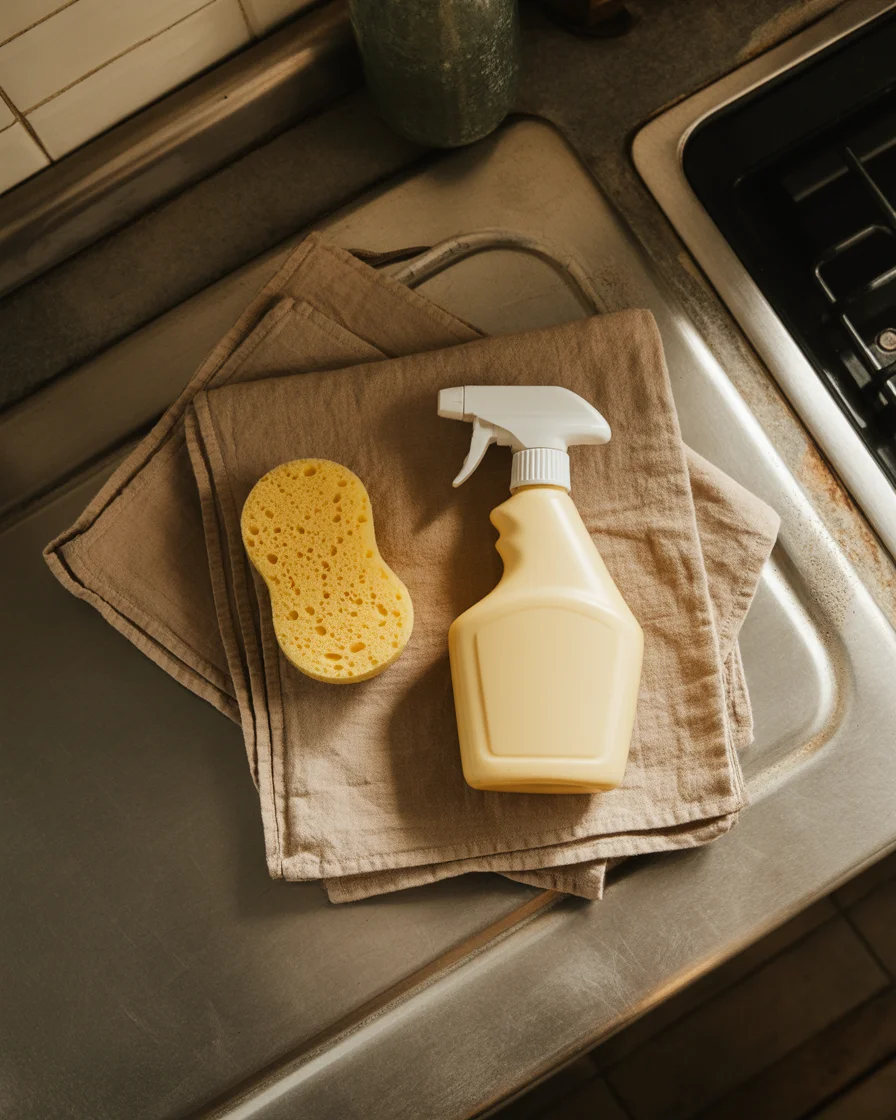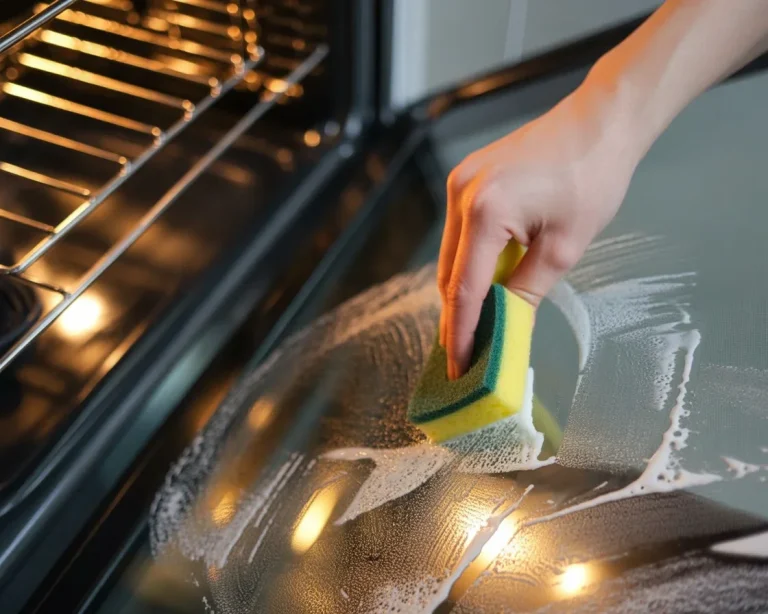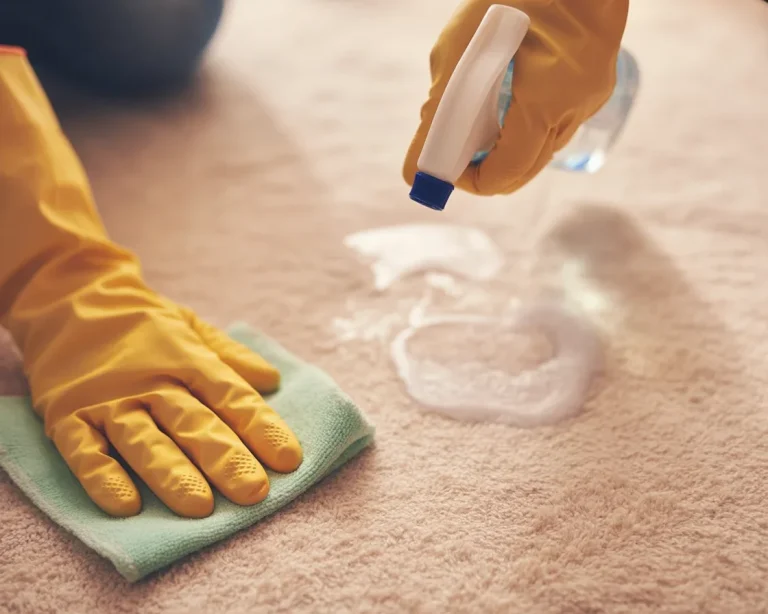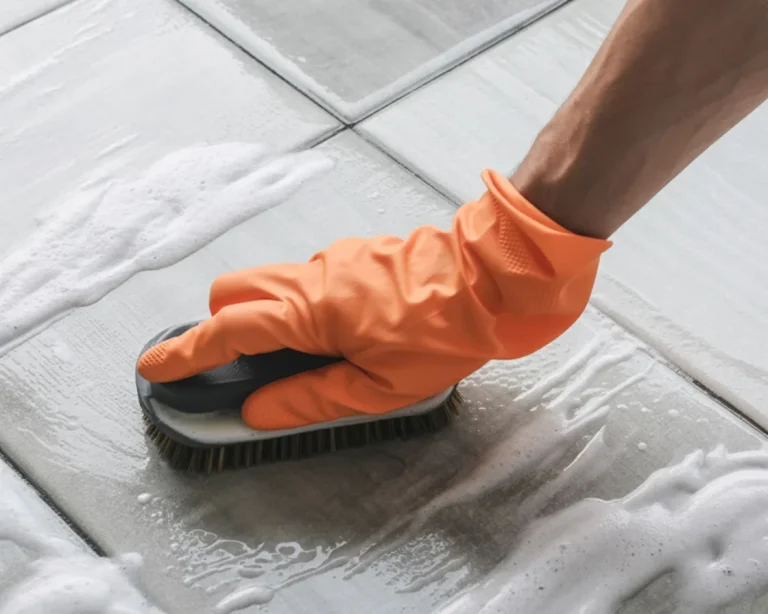How to Clean Your Oven with Baking Soda
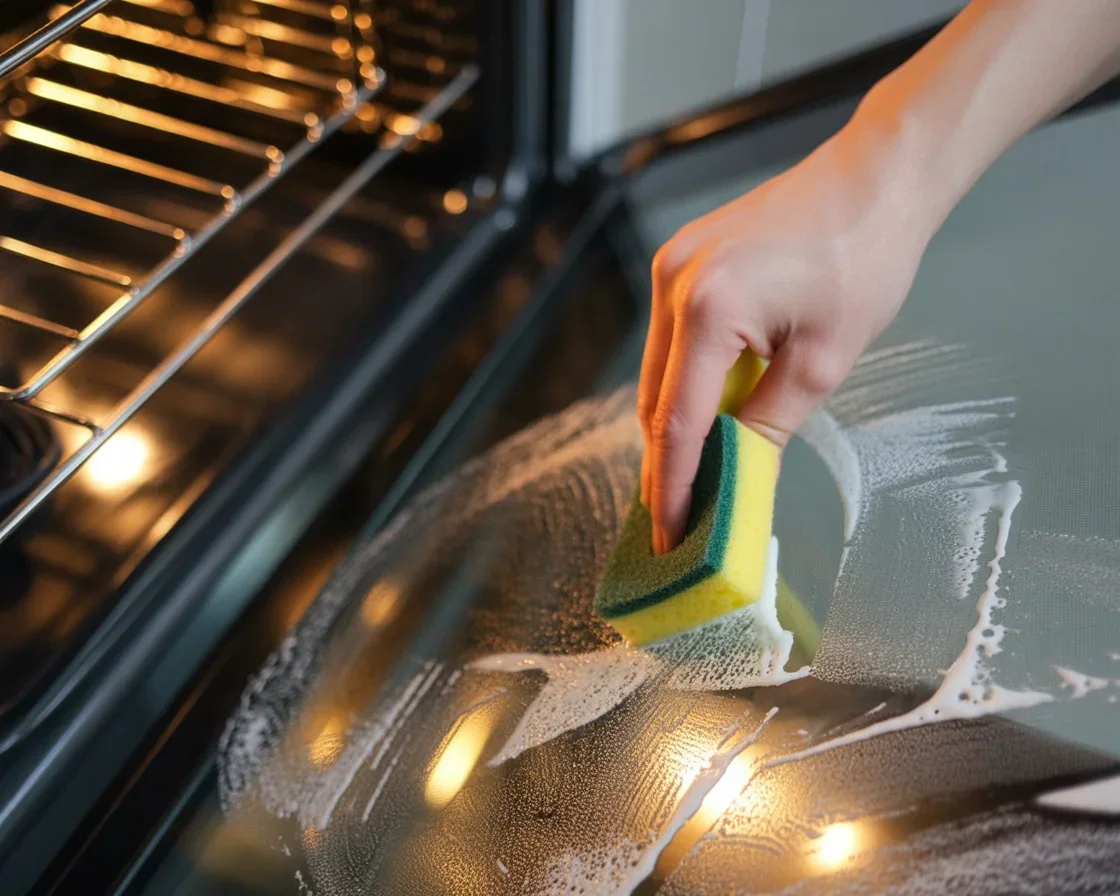
How to Clean Your Oven with Baking Soda saved my sanity one messy holiday. I love roasting everything, but I do not love the smoky haze that happens when drips burn into a crust on the oven floor. If your oven door is cloudy and your racks feel grimy, you are not alone. I used to stall on cleaning day until a pizza bubble spilled and set off the smoke detector. The good news is you do not need harsh chemicals to fix it. You can do this with pantry stuff and a little patience.
A Natural Oven Cleaner Without Harsh Chemicals
Here is why I reach for baking soda first. It is affordable, safe to keep around kids and pets, and it actually works. The gentle grit helps lift grease without scratching enamel, and the mild alkalinity breaks up sticky messes. When you add a splash of water, it turns into a spreadable paste that clings to vertical sides. No scary fumes. No strong perfume. Just steady, reliable cleaning power.
If you have ever searched How to Clean Your Oven with Baking Soda and felt overwhelmed by a thousand methods, let me simplify it. You will make a paste, let it sit, then wipe. That is the whole rhythm. The details below dial it in so you get that clean-glass moment when you open the door.
Safety first tips I follow every time: unplug the oven if you can, let everything cool completely, and work with windows open. Avoid spreading paste on gas ports or electrical heating elements. When in doubt, apply around those areas with a light hand and use a damp cloth to clean edges.
“I quit using store sprays after trying this method. No headache from fumes, and my glass door finally looks clear again.”
Pro bonus Baking soda also helps remove odors. After a smoky spill, a quick clean with it will make your next bake smell like food again, not ash.
Basic Oven Cleaning with Baking Soda
What you will need
- Baking soda about 1 cup for a standard oven
- Warm water to make a spreadable paste
- White vinegar optional for a final spritz and shine
- Soft sponge or non-scratch scrub pad
- Plastic scraper or old plastic card
- Microfiber cloths for wiping and drying
- Gloves if you have sensitive skin
Steps that actually work
Start by removing the racks. Set them in the sink or bathtub if you plan to clean those too. Dust out any loose crumbs from the oven floor with a dry cloth or handheld vacuum. This gives the paste direct contact with crusty spots.
Mix your paste. I usually do 1 cup of baking soda with 3 to 5 tablespoons of warm water. Add water slowly until it looks like thick icing. It should spread easily but not drip. Too runny and it will slide off the walls; too thick and it will clump. You can always adjust with a little more water or powder.
Spread the paste over the oven floor, sides, and the inside of the door. Keep it thin and even. Use a small brush or gloved fingers to get into corners, but keep the paste off the heating elements and the oven light. If you have a gas oven, avoid coating the gas ports.
Let it sit. Give the paste time to work. For everyday grease, 30 to 60 minutes is usually enough. If you have messes from last month, aim for 2 to 3 hours. This dwell time is the secret. The paste draws out brown, baked-on oils while softening food bits.
Wipe and rinse. Use a damp sponge to lift the paste and grime. Rinse the sponge often and switch to clean water so you are not spreading residue around. For stubborn areas, a gentle pass with the plastic scraper makes the gunk release without scratching the surface.
Finish the glass. For the oven door glass, wipe it clean, then spritz lightly with vinegar and buff with a dry microfiber cloth. The vinegar cuts any haze from leftover powder and gives a clearer shine.
Side note on racks: spray them with hot water, sprinkle with baking soda, then drizzle a bit of vinegar. Let the foam settle for 10 minutes, scrub with a non-scratch pad, and rinse. Dry well before putting them back.
That is the whole basic plan. It is simple, repeatable, and it is the easiest way I know to start practicing How to Clean Your Oven with Baking Soda at home without stress.
Heavy Duty Oven Cleaning with Baking Soda
For stubborn, baked-on splatters
- Warm the oven slightly for 2 to 3 minutes, then turn it off. You want it just lukewarm. A hint of warmth helps the paste work faster.
- Make a thicker paste by mixing 1 cup baking soda with 2 to 3 tablespoons water and 1 tablespoon of coarse salt. The salt adds a little safe scrub power.
- Spread a generous layer over blackened spots and along the back wall. If grease is pooled at the edges, ring those areas first.
- Cover a few worst spots with a damp paper towel pressed onto the paste. This keeps moisture in and turbo-charges the soak.
- Walk away for 6 to 8 hours, or overnight if the mess is ancient. Patience beats endless scrubbing.
- Scrape gently with a plastic scraper, then wipe with a hot, damp sponge. Rinse often.
- Finish with a light vinegar spritz to neutralize any chalky feel and wipe dry with a clean cloth.
- If your oven has a self-clean cycle, I still do this first. It reduces smoke and smell during that high-heat run, or sometimes makes the cycle unnecessary.
One more hint: if there is a burnt sugar spill from pie syrup or caramel, lay a hot, damp towel over the paste for 15 minutes before wiping. Sugary spills melt better with heat and moisture.
How Often Should You Deep Clean Your Oven?

Short answer: it depends on how much you cook and what you cook. If you roast veggies and bake cookies most weeks, a quick wipe every two weeks and a deeper clean every two to three months feels about right. If you broil steaks or bake cheesy casseroles often, you might want a monthly deep clean. Smoke, smell, and visible brown patches are your cue that it is time.
Here is my routine that keeps things mellow:
After a messy roast, wipe the warm oven door with a damp cloth once it is safe to touch. That five-second habit prevents haze from building up on the glass. Use a rimmed sheet pan under bubbly pies and lasagna to catch drips. If you want a liner, pick one rated for your oven and keep it on the lowest rack, never on the oven floor. And remember, quick action beats scrubbing later. The same goes with racks. A rinse and light scrub right after a spill saves you from the overnight soak later on.
Every third month, I block out an hour and do a thorough baking soda clean. It puts you ahead of the grime curve and keeps cooking smells pure. You would be surprised how much better bread browns when the oven is clean.
Cleaning Your Oven with Baking Soda and Vinegar
Let us talk about the fizz. Vinegar and baking soda react, and that fizz helps lift residue from corners and textured spots. You can use vinegar in two smart ways. First, after you have wiped off most of the baking soda paste, mist the surfaces with vinegar and wipe dry. The reaction helps grab leftover powder and leaves less haze. Second, for tight corners where paste is awkward, sprinkle dry baking soda, spritz with vinegar, let it bubble for a minute, then dab clean.
Want a specific routine you can rely on? Spread your baking soda paste and let it sit for 1 to 2 hours. Wipe off the paste with a damp sponge. Lightly spray vinegar on remaining film until it foams, then wipe again and dry. You get the power of the paste plus the tidy finish of vinegar. This combo is my favorite upgrade to How to Clean Your Oven with Baking Soda when I want that extra polished look.
A few cautions so you stay on the safe side. Do not pour liquid into vents or seams. Avoid soaking electrical parts. Test vinegar on a hidden spot of your racks if they are aluminum, since aluminum is sensitive to acids. Always finish by drying surfaces with a clean cloth so moisture does not sit on seals or in corners.
Common Questions
Do I need any special tools for How to Clean Your Oven with Baking Soda?
Nope. A bowl, a sponge, a plastic scraper, and a couple of cloths are enough. Gloves are nice if your skin is sensitive.
Can I keep the oven racks inside while I clean?
I take them out. It is easier to reach corners, and you can clean the racks at the sink without dripping paste everywhere.
Will this scratch my oven?
Baking soda is a mild abrasive. Used as a paste with water and a soft pad, it should not scratch enamel or glass. Skip steel wool and choose non-scratch pads to be safe.
How do I remove the white film after cleaning?
That is normal residue. Wipe a few times with a damp sponge, then spritz vinegar and buff dry with a microfiber cloth. Shiny again in seconds.
Is it safe for the oven door glass?
Yes. Use a gentle touch. If grease hides between the glass panes, that is a separate, fiddly job that sometimes needs removing the door, so check your manual first.
Ready to See Your Oven Sparkle?
I get it. Cleaning is not the fun part of cooking, but it feels amazing when your oven looks fresh and smells clean. If you follow this simple plan for How to Clean Your Oven with Baking Soda, you will spend less time scrubbing and more time baking. Keep it basic for light messes, go heavy duty for stubborn gunk, and finish with a little vinegar for that clear glass shine. Give it a try today and enjoy the kind of kitchen glow that nudges you to cook something delicious.



